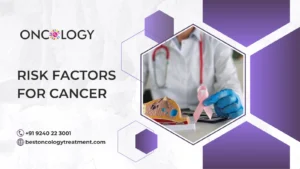Understanding the stages of uterine cancer and treatment helps patients and families feel more in control. Each stage tells how much the cancer has grown and what treatments can help. This guide breaks down all four stages, what surgery or therapies might be needed, and how to take care of yourself afterward. Whether it’s early or advanced, knowing what’s ahead brings hope and direction. This blog is written in simple language to explain the stages of uterine cancer and treatment, common symptoms, diagnosis, and support after treatment.
Introduction
Getting diagnosed with uterine cancer can be a shock. But understanding the stages of uterine cancer and treatment can make things clearer. Each stage tells how far the cancer has grown and helps doctors choose the best treatment. Uterine cancer starts in the lining of the uterus, called the endometrium. Catching it early gives you better chances to recover. In this blog, we’ll walk you through the different stages of uterine cancer and treatment, explain what happens at each stage, and help you feel more prepared for the road ahead.
How Does Uterine (Endometrial) Cancer Staging Work ?
Doctors use a system called staging to see how far the cancer has spread. The uterine cancer stages range from 1 to 4. The lower the number, the less the cancer has spread. Higher numbers mean the cancer has reached nearby organs or other parts of the body.
Key Points About Uterine Cancer Staging :
- Stage 1: Cancer is only in the uterus.
- Stage 2: Cancer has spread to the cervix.
- Stage 3: Cancer has spread outside the uterus but not far.
- Stage 4: Cancer has spread to the bladder, rectum, or distant organs.
Doctors use scans, biopsies, and tests for uterine cancer diagnosis. They also look at uterine cancer symptoms like bleeding after menopause or pelvic pain. These tests help them find the stage and decide the best plan.

Stage 1 Uterine Cancer
In Stage 1, the cancer is only in the uterus. This is the earliest and most treatable stage. Most people find out at this stage because of early uterine cancer symptoms like unusual bleeding.
What Happens in Stage 1 ?
- The tumor is only in the uterus lining or muscle.
- It hasn’t spread to other organs.
- Uterine cancer diagnosis is made using scans and biopsy.
Treatments for Stage 1 :
- Surgery (hysterectomy – removing the uterus)
- Sometimes radiation or hormone therapy if needed
Important Tips for Stage 1 :
- Keep all follow-up visits with your doctor.
- Ask about side effects of surgery or hormone therapy.
- Maintain a healthy lifestyle to support healing.
This is a common stage for catching uterine cancer early. With proper care, treatment success is high.
Stage 2 Uterine Cancer
Stage 2 means the cancer has grown from the uterus to the cervix. It’s still considered early but needs more care than Stage 1.
What Happens in Stage 2 ?
- Cancer has moved to the cervix but not beyond.
- You may still notice uterine cancer symptoms like pain and bleeding.
Treatments for Stage 2 :
- Surgery (removal of uterus and cervix)
- Radiation therapy after surgery
- Some may need chemotherapy
Key Advice for Stage 2 Patients :
- Ask your doctor about preserving ovaries if you are younger.
- Prepare for a longer recovery time after surgery.
- Stay informed about side effects of treatment.
The goal in Stage 2 is to remove all cancer and stop it from spreading further.
Stage 3 Uterine Cancer
Stage 3 means cancer has spread outside the uterus and cervix. It may affect nearby lymph nodes or the vagina.
What Happens in Stage 3 ?
- Cancer reaches tissues near the uterus.
- It may go to lymph nodes but not far organs.
- Symptoms may become stronger.
Treatments for Stage 3 :
- Surgery to remove as much cancer as possible
- Radiation and chemotherapy
- Sometimes hormone therapy
Helpful Tips for Stage 3 :
- Ask for a care team to help manage side effects.
- Track your energy levels during treatment.
- Eat soft and healthy foods to help your body heal.
Even in Stage 3, people can live long lives with the right treatment plan.
Stage 4 Uterine Cancer
Stage 4 is the most advanced. Cancer has spread to the bladder, rectum, or far away organs like the lungs.
What Happens in Stage 4 ?
- Cancer spreads far from the uterus.
- Symptoms can include tiredness, weight loss, or pain.
Treatments for Stage 4 :
- Chemotherapy and radiation
- Surgery in some cases
- Palliative care to ease symptoms
Tips for Living with Stage 4 :
- Stay close to your care team for help.
- Ask about pain management and emotional support.
- Talk to family or counselors to ease stress.
Even in Stage 4, treatment can slow cancer and improve quality of life.
What Type of Uterine Cancer Surgery Will I Need ?
The main treatment is surgery, usually a hysterectomy. The type depends on your uterine cancer stage and health.
Types of Uterine Cancer Surgery :
- Total hysterectomy : Removes uterus and cervix.
- Radical hysterectomy : Also removes nearby tissues.
- Bilateral salpingo-oophorectomy : Removes ovaries and fallopian tubes.
Things to Discuss Before Surgery :
- Fertility options if you want children.
- Hormone changes if ovaries are removed.
- Length of hospital stay and recovery time.
Surgery is often the first step in treating all stages of uterine cancer and treatment begins with this plan.
What Can I Expect After Uterine Surgery ?
After surgery, your body needs time to heal. You may stay in the hospital for a few days, and full recovery may take weeks.
Common Experiences After Surgery :
- Tiredness and soreness in the belly
- Trouble urinating or constipation
- Emotional ups and downs
Tips for a Better Recovery :
- Walk a little each day to boost healing.
- Drink water and eat soft, fiber-rich foods.
- Rest often and listen to your body.
Recovery is part of the journey through the stages of uterine cancer and treatment and support makes a big difference.
How Can I Take Care of Myself After Uterine Cancer Treatment ?
Self-care is key to healing after treatment. This includes physical care, mental health, and regular follow-ups.
Ways to Take Care of Yourself:
- Eat a healthy diet rich in fruits, vegetables, and protein.
- Get regular exercise like walking or stretching.
- Visit your doctor for follow-ups and blood tests.
Emotional Health Matters:
- Join a support group for cancer patients.
- Talk to a counselor if you feel anxious or sad.
- Do things you enjoy to lift your mood.
Taking care of yourself helps reduce uterine cancer risk factors in the future too.
Coping and Support
Dealing with cancer can be hard, but you’re not alone. Emotional support is just as important as medical care.
Ways to Cope with Uterine Cancer :
- Talk openly with family and friends.
- Share your feelings with a therapist or counselor.
- Write in a journal to express emotions.
Where to Find Support :
- Hospital support groups or online communities
- Cancer helplines or counselors
- Family and faith-based groups
Learning to cope is part of healing and facing the stages of uterine cancer and treatment with strength.
Conclusion
The stages of uterine cancer and treatment show how far the cancer has spread and guide doctors in choosing the best care. From stage 1 to stage 4, there are treatments and support available to help people live longer and feel better. Early signs like unusual bleeding should never be ignored. By understanding your stage and treatment options, you take charge of your health. Keep asking questions, stay connected to your care team, and don’t give up hope. The stages of uterine cancer and treatment don’t define your strength does.
Read Also: Symptoms of Ovarian Cancer




